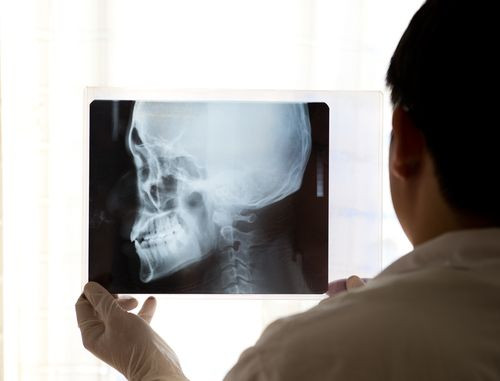Facial Reconstruction May Become A Bit Easier With New 'Self-Fitting' Material That Helps To Fill Bone Defects In Faces

Bone and muscle defects due to a variety of reasons such as birth abnormalities or surgery can occur in any part of the body, like the face or limbs. These defects cause gaps in the bone and may be too large to heal naturally. Facial abnormalities that occur due to such gaps can radically change a person’s appearance and require medical intervention. Researchers, in a scientific breakthrough, have developed a "self-fitting" material that expands with warm salt water to exactly fill the contours left by bone defects, and also acts as a scaffold for new bone growth.
Developed by researchers at the Texas A&M University, this new innovation will be presented at the 248th National Meeting & Exposition of the American Chemical Society (ACS), the world's largest scientific society, taking place in San Francisco.
Current procedures available to fill defects in the craniomaxillofacial area, which include the head, face, or jaw is autografting. In this procedure, the patient’s own bone is harvested from some other part of his body, such as the hip bone. The surgeons then try to mold it to fit the bone defect. "The problem is that the autograft is a rigid material that is very difficult to shape into these irregular defects," said lead study author Dr. Melissa Grunlan in a statement.
Another disadvantage is that it creates a second surgical site, the site from where the bone was harvested, and the patient has to recover from that as well. Another method is to use malleable bone putty or cement to fill in gaps. Although considerable advancements have been made in these materials, they are still not considered ideal, as they tend to become brittle on hardening, and lack pores, or small holes that would allow new bone cells to move in and rebuild the damaged tissue.
This new material is a shape-memory polymer (SMP) that molds itself to the exact shape of the bone gap without becoming brittle. It also contains pores that support the growth of new bone tissue. SMPs are unique materials, as their geometry changes in response to heat. The team made a porous SMP foam by linking together molecules of poly(ε-caprolactone), an elastic, biodegradable substance that is already used in some medical implants. The resulting material was something like a stiff sponge, with interconnected pore morphology that allows bone cells to migrate in and grow.
When heated to 140 degrees, the SMP becomes very soft and malleable. So, during a surgery to the craniomaxillofacial area, the surgeon has to simply warm the material to 140 degrees and then fill the bone defect with the material. As the material cools to body temperature (98.6 degrees), it resumes its former stiff texture and "locks" into place.
To make sure that it sticks properly, the researchers coated the SMPs with polydopamine. This sticky substance produces a mineral that is found in the bone and helps lock the polymer into place. It may also help osteoblasts, the cells that produce bone, to adhere and spread throughout the polymer.
The SMP is biodegradable, so as the new tissues develop, the scaffold will disappear, leaving only new bone tissue behind.
The scientists did additional tests to ensure that SMP could support bone growth. They seeded the polydopamine coated polymer with human osteoblasts and after three days found that these polymers had grown five times more osteoblasts than polymers without the coating. The osteoblasts in these polymers also produced more of runX2 and osteopontin, proteins critical for new bone formation.
The researchers now plan to start animal clinical trials with the SMP. "The work we've done in vitro is very encouraging," she said. "Now we'd like to move this into preclinical and, hopefully, clinical studies."
Source: Grunlan M. "Self-fitting" shape memory polymer (SMP) scaffold with potential to treat cranio-maxillofacial (CMF) bone defects. 248th National Meeting & Exposition of the American Chemical Society (ACS). 2014.



























